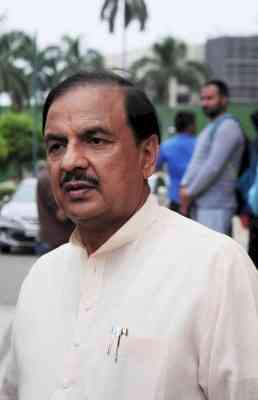NABARD CONDUCTS DISTRICT LEVEL TRAINING MEET IN LUDHIANA
Author(s): City Air News-CLIMATE RESILIENCE BUILDING IN RURAL AREAS THROUGH CROP RESIDUE MANAGEMENT Ludhiana, September 25, 2018: Punjab Regional Office, NABARD, Chandigarh launched campaign against paddy straw burning (crop residue management)...


-CLIMATE RESILIENCE BUILDING IN RURAL AREAS THROUGH CROP RESIDUE MANAGEMENT
Ludhiana, September 25, 2018: Punjab Regional Office, NABARD, Chandigarh launched campaign against paddy straw burning (crop residue management) in about 320 villages in District level training meet presided over by Dr Shena Aggarwal, IAS Additional Deputy Commissioner (D) today at Hotel Friends Regency, Ludhiana. The meeting was attended by Dr. Harjeet Singh Dhaliwal, Director, PAMETI, Prof. Dr. S C. Sharma, Associate Director (Trg.), KVK Samrala, Dr Jaspreet Singh Khera, Project Director, ATMA, LDM, Director RSeti, Sh Vijay. Sh Parveen Bhatia, DDM, NABARD, Ludhiana coordinated the programme.
While talking to mediapersons, Dr. Shena Aggarwal appreciated the efforts being taken by NABARD to curb stubble burning. She said that with the efforts of all relevant departments stubble burning has been reduced remarkably during last year. It is dire need of hour to make farmers aware about the ill effects of stubble burning.
In inaugural speech Sh Parveen Bhatia informed that Paddy-wheat is the major crop rotation occupying an area of 29.7 Lakh ha and 35.06 Lakh ha respectively. With high mechanization and extensive agriculture practices in Punjab, 80% of wheat and 90% of paddy is harvested by combine harvesters. Harvesting by combine harvester leaves behind the stubble in the fields. With narrow time in hand before next sowing and limited options farmers have, easiest way to manage stubble is to burn it in the fields. It is estimated that around 20 million tonnes of paddy straw is generated and about 75-80% of it is burnt in fields. Stubble burning in field leads to various issues with respect to pollution, soil nutrient loss, increment in CO2 emission and suspended particulate matter in atmosphere affecting environment and human health.
Stubble burning is the main contributor to climate change in the State and also the major concern for stakeholders. Impact of burning on agriculture is huge in terms of loss of soil nutrient and organic matter, loss of soil moisture, etc. Only loss of nutrients can approximately count up to Rs. 1410 per hectare apart from intangible losses of organic content, moisture and micro-nutrients.
Keeping in view the above facts, a project on Climate Resilience Building in Rural areas through crop Residue Management has been sanctioned by Ministry of Environment, forests and climate change; Government of India. Under this project, NABARD RO is to conduct the awareness campaign covering all the 12000 villages in cluster mode throughout all the districts of the State. The campaign to include all types of channels viz. publicity materials, awareness through ads /and jingles on AIR & Doordarshan, conduct of awareness camps at various levels, etc. for awareness on crop residue management. The awareness campaign is to be conducted during Kharif 2018 and the same is to be completed before start of harvest of Kharif 2018. The campaign is to focus on sensitizing and creating awareness amongst the farmers.
The main goal of the campaign is to reduce stubble burning and avoid environmental pollution and mitigate climate change. The campaign will focus on objectives like Creating climate change awareness and about ill effects of stubble burning, Demonstration/awareness on use of various machineries/practices, Awareness on alternate uses of paddy straw, Adoption of various machineries, alternative practices and technologies by farmers, Improve soil health – Organic matter and nutrients.
The campaign is to be carried out throughout all the 22 districts of Punjab covering all paddy growing areas/villages. The campaign is to cover 12000 villages by conducting 1200 cluster level programmes. It is decided that the campaign may be conducted in paddy growing areas only and not in areas where paddy is not a major kharif crop thus covering around 11,500 villages and the campaign to be carried out in cluster mode with each cluster covering 2-3 villages. Thus, conducting approximately 4000 cluster level programmes.

 cityairnews
cityairnews 













